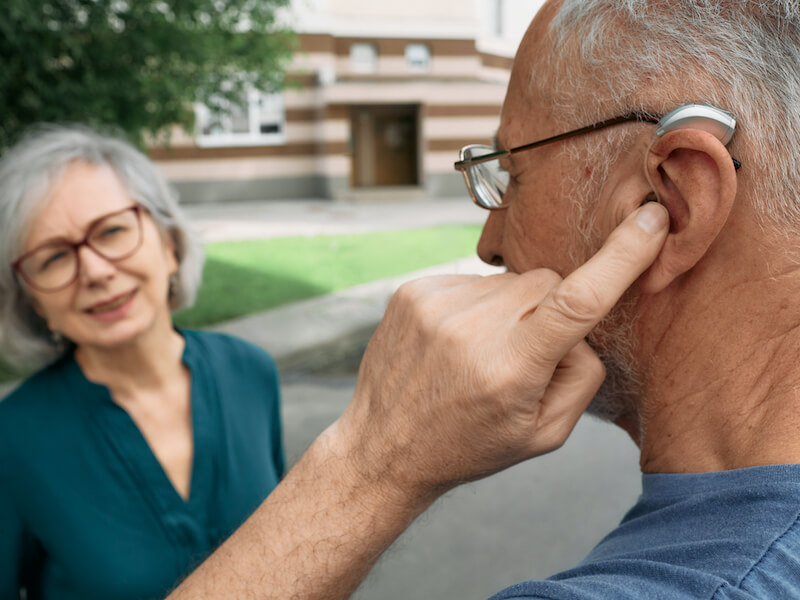
Have you ever had your internet disappear right as you’re getting to the best part of your favorite Netflix show? You sit there and watch that spinning circle instead of learning about who won that cooking competition. All you can do is wait around for it to come back. Is it your internet provider, modem, router, or maybe it will just come back on its own? It kind of stinks.
Technology can be enormously aggravating when it doesn’t work properly. Your hearing aids definitely fall into this category. The majority of the time, your hearing aids will give you the means to remain connected to loved ones, have conversations with co-workers, and keep up with your neighbors.
But when they quit working, your hearing loss symptoms can abruptly become much more frustrating. You’ve been disappointed by the technology you count on. How do hearing aids just quit working? So how do you cope with that? Well, there are three prevalent ways that hearing aids can fail, here’s how you can begin to identify and troubleshoot those issues.
Three common issues with hearing aids (and some possible solutions)
Hearing aids are sophisticated devices. Even still, there are some common issues that people with hearing aids might experience. Let’s take a look at possible causes of these problems and potential fixes.
Feedback and whistling
Maybe you suddenly start to hear a terrible high-pitched whistling while you’re trying to have a chat with a friend or family member. Or perhaps you notice some feedback. You begin to think, “this is strange, what’s up with this whistling”?
Here are three potential issues that could be causing this feedback and whistling:
- You might not have your hearing aids seated properly in your ears. Try to take them out and re-seat them. You can also try turning the volume down (if this works, you may find some temporary relief, but it also likely means that the fit is indeed not quite right and you should speak with us about it).
- Earwax accumulation in your ear canal can undermine how your hearing aid works. This is a relatively common one. That includes making your hearing aid whistle or feedback. You can try to clean some of the earwax out (never use a cotton swab) and if that fails, you can get some help from us.
- The tubing that attaches the hearing aid with the earmold, on behind-the-ear models, can sometimes become compromised. Have a close look to identify whether the tube might have detached or might be damaged somehow.
Depending on the underlying cause of the feedback, we can help you resolve these issues if you can’t figure them out on your own.
Hearing aids not producing sound
The main goal of hearing aids is to generate sound. That’s what they’re made to do! Something has definitely gone wrong if you can’t hear any sound coming out of your hearing aid. So what could cause hearing aids to lose all sound? Well, there are a couple of things:
- Earwax buildup: Yup, earwax strikes again. Have a close look to see if you come across any earwax on the speakers or microphone. Keep your device very clean.
- Power: Look, we’ve all disregarded turning the hearing aids on before. Make certain that’s not the issue. This potential issue can then be eliminated..
- Batteries: Be sure your batteries are completely charged. And even rechargeable batteries should be switched out once in a while.
- Your settings: If you have them, flip through your custom settings. It’s feasible your hearing devices are on the wrong custom setting (so perhaps your hearing aids think you’re in a gymnasium instead of at the kitchen table). The sound you’re hearing may be off as a consequence.
If these steps don’t help with your issues, we may have the solution. We’ll be able to help you identify the next steps, and whether maintenance, repair, or replacement is required.
When you have your hearing aids in, your ears hurt
What if your hearing aids work perfectly, but whenever you put them in your ears, your ears begin to hurt? And you’re most likely thinking: why do my ears hurt when I wear my hearing aids? You’re not as likely to wear your hearing aids on a daily basis if they hurt your ears. So, what could be causing it?
- Time: Usually, it just takes a little while to get used to your hearing aids. How long it takes will depend on the person. It’s worth talking about when you buy your hearing aids so you have a reasonable concept of how long it may take you to get comfortable with your devices. Also, speak with us about any discomfort you may be having.
- Fit: The fit of the device is the most evident issue. After all, most hearing aids work best when the fit is nice and snug. So when your hearing aids aren’t fitting very well, there can be some pain. Some models of hearing aid can be fit to the specific shape of your ears. Over the long run, you will have fewer issues if you have a snug fit. We will be able to help you get the best possible fit from your devices.
Take your new hearing aid out for a test ride
One of the best ways to avoid possible issues with hearing aids is to take them out for a bit of a test drive before you commit. In the majority of instances we’ll let you test out a pair of devices before you determine that’s the set for you.
Choosing the right hearing aids, adjusting them to fit your needs, and helping with any ongoing problems you might have, are all things we will help with. In other words, when your devices stop working, you’ll have a resource that can help!
And that’s most likely more dependable than your internet company.